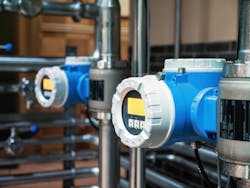Application Corner: Confusing flowmeter hazardous location specifications
Explosionproof commonly refers to a strategy of mitigating a hazard by containing a potential explosion within an enclosure. However, instruments are often termed explosionproof to denote their approval for use in Division 1 (Zone 1) hazardous locations, where the hazard is considered to always be present. It is not that simple, because different Division 1 (Zone 1) locations can contain gases that ignite at different temperatures and produce explosions of different intensity, all of which could be described under the umbrella of explosionproof.
Therefore, protection for different gas hazards requires different maximum temperatures under adverse conditions and different containment strengths. For example, an explosionproof enclosure for a location with hydrogen is more robust than an explosionproof enclosure for hydrocarbon vapors. Therefore, an enclosure rated for hydrogen service can be used for hydrocarbon vapors, but not vice versa.
Instruments can also be formally approved for use in Division 2 (Zone 2) hazardous locations that are less restrictive because the hazard is present occasionally, such as under abnormal operating conditions. It is not uncommon for instruments to have both Division 1 (Zone 1) and Division 2 (Zone 2) approvals, even though the latter may not be formally required. This can create confusion.
For example, flowmeters were specified for installation in a Zone 2, Group IIC T3 hazardous location. Appropriate flowmeters were selected and found to be approved as ATEX/IEC Ex II 2 G Ex db IIB Tx Gb. At first glance, the selected flowmeters do not appear acceptable because the requirements for Group IIC gases are more stringent than for Group IIB. However, the latter part (Ex db IIB Tx Gb) applies to Zone 1, and is not relevant to the specified Zone 2 hazard (Ex II 2 G). Zone 2 requirements do not make any distinction for Groups or Tx ratings, so Zone 2 approval applies to all gases, including the specified Group IIC T3.
Attention to detail is sometimes necessary to transform a questionable selection into a viable alternative.
About the Author
David W. Spitzer
David W Spitzer’s new book Global Climate Change: A Clear Explanation and Pathway to Mitigation (Amazon.com) adds to his over 500 technical articles and 10 books on flow measurement, instrumentation, process control and variable speed drives. David offers consulting services and keynote speeches, writes/edits white papers, presents seminars, and provides expert witness services at Spitzer and Boyes LLC (spitzerandboyes.com or +1.845.623.1830).
